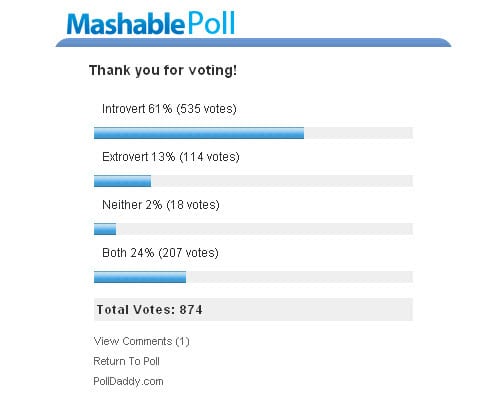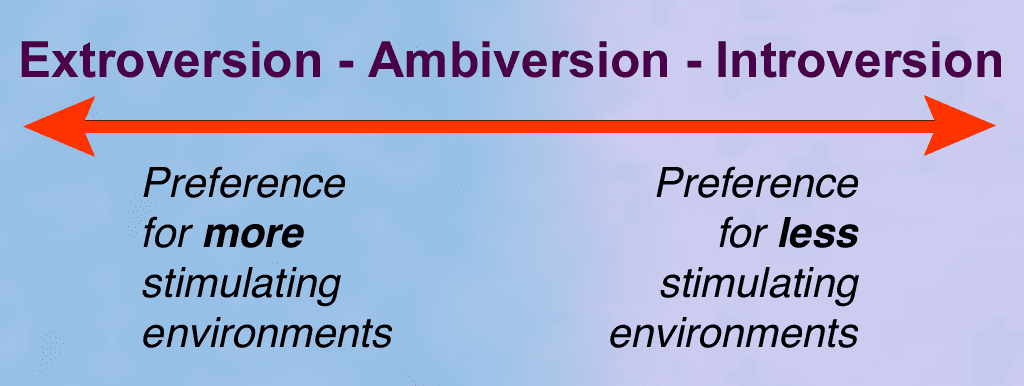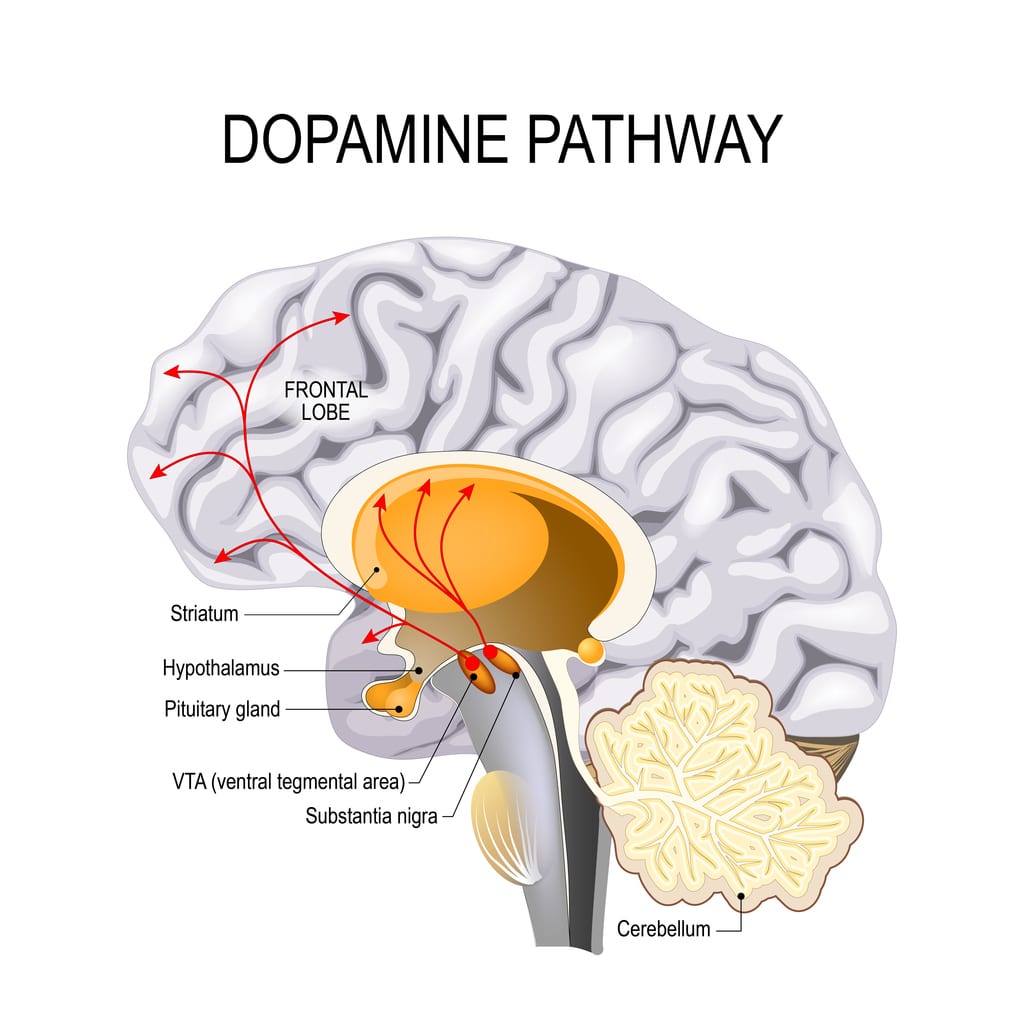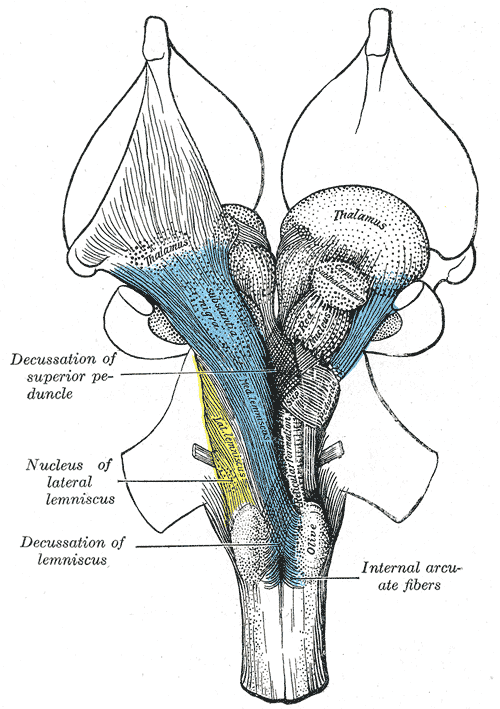There are a million quizzes online nowadays that purport to tell you whether you’re an introvert or an extrovert, but, honestly, it’s not that hard to tell. I see a lot of generalizations about either category – extroverts are all “social butterflies” and introverts are all “over-analyzers” – but the main difference between an introvert and an extrovert, as established by Carl Jung when he coined the terms in the early 20th century, isn’t about how they interact with others, it’s about how they recharge their mental energy.

Most people are extroverts, but I’m guessing there may be some self-selection towards introverts in terms of who winds up voting in online polls. Lol.
Photo Credit: Flickr, Elana Centor
At its simplest level, extroversion means that a person draws energy from interacting with other people. If they’re alone for too long, they start to get irritable, depressed and bored, and it’s harder for them to get overwhelmed when they have a lot of social stimulation.
Introversion means kind of the opposite: an introvert draws energy from being alone, doing whatever they want to do. If they’re around a lot of people for a long time, they start to get overwhelmed and stressed out, but they can be on their own for longer periods of time without feeling lonely or depressed.
In a nutshell, those are the differences between introverts and extroverts. And if you found yourself nodding along at one of those descriptions, then you’re probably the personality type you were nodding at! See? No internet quiz required.
Of course, in the real world, everything is complicated, and the dichotomy we’ve painted above is no exception. Introverts can absolutely go out and have a great time at a big party, and extroverts can absolutely enjoy a quiet afternoon reading at home…but when those things are over, they’ll need to recharge their mental energy, either by chilling out, or by socializing.

Photo Credit: RCraig09, CC BY-SA 3.0
Extroversion and introversion are really more of a spectrum, and people fall all along it – including right in the middle. People who sit in the middle of the E/I spectrum are referred to as ‘ambiverts’.

Photo Credit: iStock
Here is the really interesting bit. There are actually reasons for intro- and extroversion, neurological reasons that mean the two sides of the spectrum have fundamental differences in the wiring of their brains. Brains are notoriously complicated (duh), so at the moment there are two broad explanations for what’s going on in the brains of introverts and extroverts. One has to do with the way our brains process rewards, and the other has to do with our levels of “cortical arousal,” which is basically how much activity there is in the brain and how fast it’s going.
FYI, these two theories are not mutually exclusive. In fact, there’s evidence for both of them, and they both could very well be complimentary to each other in a way that allows for the spectrum I mentioned earlier. Just wanted to mention that upfront.

Photo Credit: iStock
The rewards theory of intro- and extroversion has to do with dopamine. Dopamine, as you may know, is a neurotransmitter that encourages us to feel good about the things we’re doing, especially in relation to outside motivations. If you ever felt excited about trying to get someone’s number in a bar, there was probably dopamine involved. Most people have the same levels of dopamine available to their systems, but not everyone processes it the same way. For some people, the reward pathways of dopamine are more active in social situations – say, the aforementioned scenario about getting someone’s number. The people who have rewards pathways that are more activated by social situations are extroverts.
In a recent study, extroverts and introverts were split into two groups; one was given Ritalin (which stimulates dopamine release), and the other a placebo. They were told to watch a series of films of nature scenes. After three days, scientists stopped giving out Ritalin and had the participants watch the videos again. The extroverts who had taken the drug were stimulated by the videos because their neural pathways associated them with dopamine release. The introverts were not particularly stimulated at all, indicating that there are fundamental differences in the dopamine reward pathways between intro- and extroverts.

The ascending reticular activating system, part of your brain stem.
Photo Credit: Public Domain
The arousal theory of intro- and extroversion has to do with how much activity is baseline normal for different brains. There’s a part of the brain called the ascending reticular activating system that basically regulates how much ‘arousal’, or activity, you’ve got going on at any particular time. For some people, the baseline is lower, and for others it’s higher, but we all have an optimal level that requires some outside stimulation.
If your baseline stimulation is on the higher end, that means you need less outside stimulation in order to be at the perfect level of mental ‘arousal’ – these people are on the introverted side of the spectrum. If they exceed the optimal level of arousal by being too social, they get stressed, irritated and frazzled. If your baseline ‘arousal’ is lower, you need more stimulation for your brain to get to the optimal level. That makes you extroverted, and if you don’t get the stimulation you need, you get grumpy, bored and depressed.
Either way, just be yourself! This stuff is a spectrum, no need to put yourself in a box, man.






